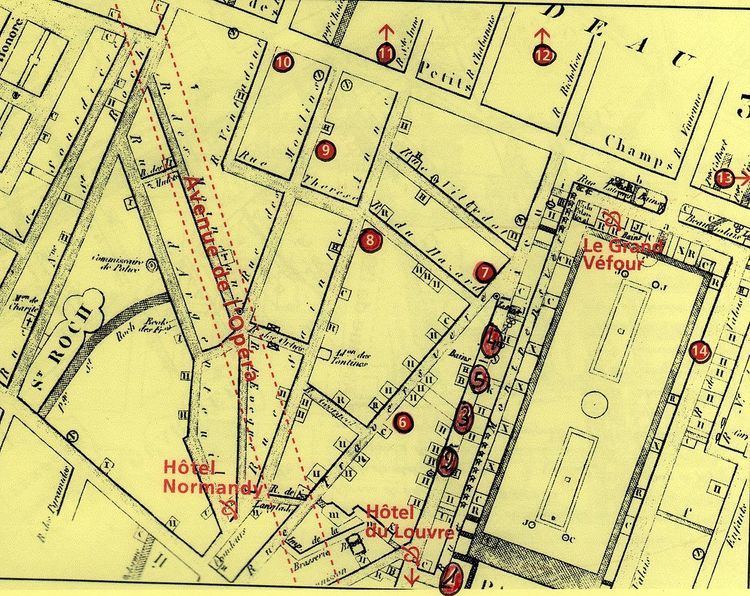Name Helene-Louise Demars | ||
Hélène-Louise Demars (born c. 1736) was French composer. She wrote several works including cantatas dedicated to nobles such as Mademoiselle de Soubise of the Rohan family and Madame La Marquise de Villeroy. She went on to become a teacher of several instruments such as the harpsichord and the violin.
Contents
Early life
Helene-Louise Demars was born in 1736. Though the location of her birth is not documented, she was most likely born in Paris, since her father, Jean-Odéo Demars was a musician at two churches in Paris. This can also be inferred because all her documented works were printed in Paris. Information about her mother and existence of other siblings are unknown, Demars lived with her mother and siblings in the Rue St. Thomas du Louvre], when her father died in 1756.

With influences from her musical father, she mostly likely learned from him as he played and composed songs for the Church.
Personal life
Demars married Jean-Baptiste Vernier, a violinist and music dealer specializing in foreign editions in 1759. It is unknown if she and her husband had any children. Throughout her life, she may have worked with her husband to support the music shop.
Career and Works
According to its number of references among sources, her most cited-work, "L'Horoscope" is Demars' most well-known work, which is dedicated to Mademoiselle de Soubise of the Rohan family. It was performed for the dedicatee as early as November 21, 1748, when Demars was about 12 years old. It was then published in the Mercure de France the following year in 1749 She also dedicated her work called "Hercule et Omphale" to Madame La Marquise de Villeroy. She has several other works that she has composed:
Demars also became a member of Alexandre Jean-Joseph Le Riche de la Pouplinière's circle, who "is famed as one of the most influential patrons of the Enlightenment Era. He and his circle of rising musicians, and artists may have been her most "influential contact" at this time, for he was to other musicians such as Jean-Philippe Rameau. Through this group she was probably introduced to other artists of her time as well as acquired patrons whom she could compose and play songs for. It is possible that, at one point, she lived in la Pouplinière's home in Paris, since he welcomed artists and luminaries to stay there.
Not only a composer, she was also a teacher. She taught the violin and the harpsichord. She was advertised in the "Tableau de Paris pour l'annee 1759," as a "maîtresses" or "teacher" of the harpsichord.
